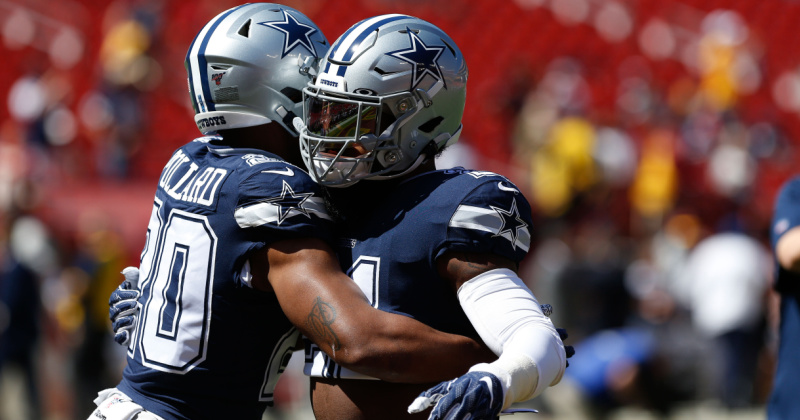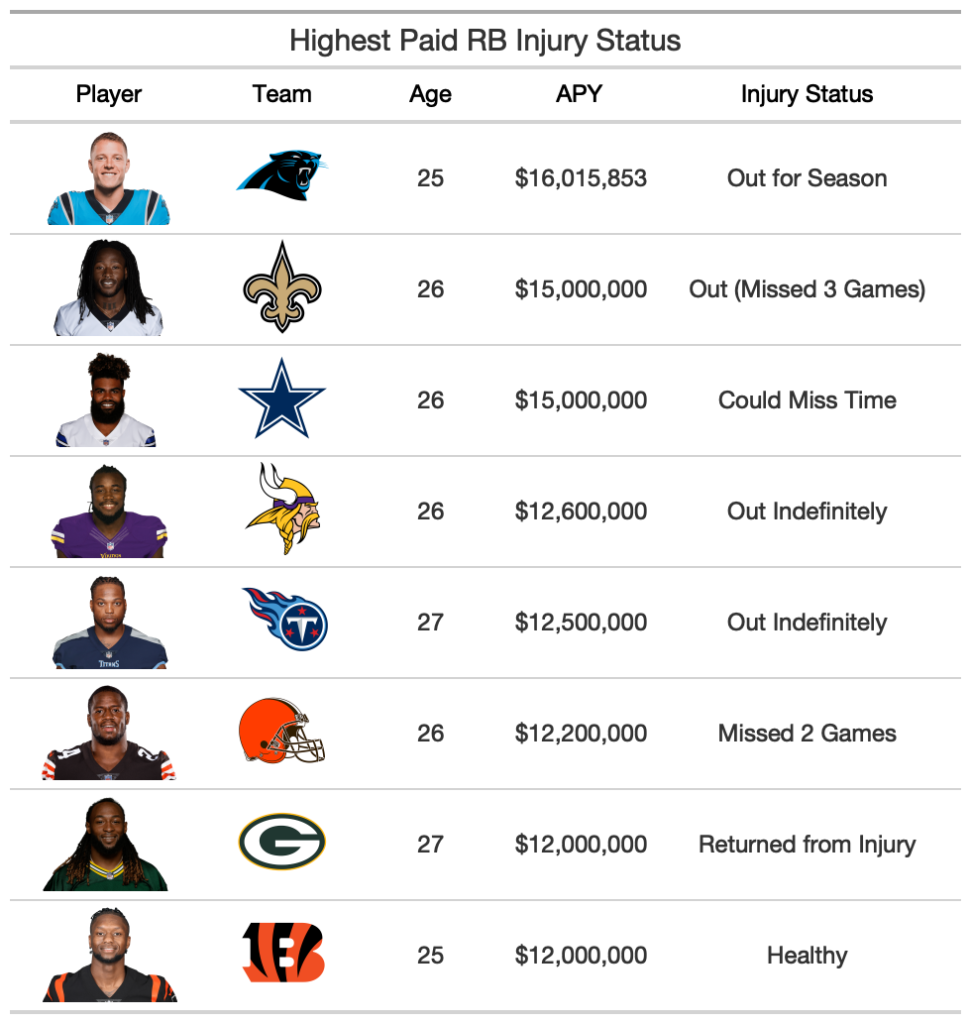Breakdowns
11/30/21
5 min read
Banner: The Myth Of Establishing The Run

Many of the major points of contention with analytics revolve around running the football. On opposite ends of the spectrum lie those who live by “establishing the run” and those who posit that “running backs don’t matter.” As much as these views diverge, they actually have something in common: they’re both wrong.
“Establish the Run”
The notion that offenses need to “establish the run” early in games to wear out defenses and set up manageable third down situations is misguided. Passing early and often is the better strategy. Play action passes are also effective, regardless of whether the run has been established.
This is not a revelation. Though many pundits refuse to come to terms with it, we’ve known for decades that “establishing the run” is a myth. Bill Walsh used to say that no matter how much he threw the ball on first down, defensive coaches wouldn’t adjust. They are so pre-oriented to stopping the run that they would either play neutral or defend the run, which only made his early-down passes more effective.
If you’re wasting first down with a run, there’s nothing in the stats or observable history that says that’s a wise thing to do. The mindset that running on first sets up second-and-reasonable and then third-and-reasonable misses the point. Instead of aiming for reasonable third downs, you should focus on getting the first down on second down.
Great coaches like Bill Walsh and Andy Reid understand that it is ideal to avoid third down entirely. They accomplish this by passing early. First and 10 is the most advantageous time to pass and the hardest down to run. Passing on first down sets up shorter second downs, making it easier to avoid third down. In contrast, running on first down makes second down more difficult by creating second-and-long situations that incentivize the defense to come after the QB.
Our goal was to run the ball one-third of the time. This kept the defense honest enough while accomplishing what we needed to in terms of play action. At some point, the play action fake will cease to be effective if you don’t run enough. But no team in the NFL has come close to reaching this point. Coming out on the first play of a game with play-action is still more likely to be successful than just a straight dropback.
Regardless of how often you run, you must be able to run effectively. When you have the lead late, it is key in shortening the game. It also enables teams to exert physical dominance, which has value.
The other common argument in favor of establishing the run is that it will pay dividends late in the game by tiring out the defense. Over the years, I must’ve asked 100 different defensive linemen the following question: which wears you out more—rushing the passer or trying to hold your ground on the run?
100 out of 100 said rushing the passer is more taxing, and this makes sense when you think about it logically. Rushing the passer requires players to run longer distances and overcome more resistance. They have to attack every pass rush at their highest speed. If the QB is able to break the pocket, it only forces pass rushers to accelerate in pursuit.
Run plays, however, are directional, in essence taking certain defenders out of the play. Even if the run is at them, the defensive lineman’s task is mainly to hold up so the LB behind them can make the stop.
There is no justification for “establishing the run” that holds up under scrutiny.
“Running Backs Don’t Matter”
Those of us who contend that we would never pick a running back in the first-round or pay them $12M or more per year are often misconstrued. We do not think that running backs are unimportant. On the other hand, certain running backs play significant roles, especially in the passing game.
In 2021, completion percentage when targeting a running back is 81.7%. While the yards per attempt on these passes (6.3) is about two yards less than a WR reception (8.4), the completion percentage is over 15% higher.
RBs who are dynamic in the pass game create mismatches with linebackers, allowing offenses to control the crucial middle of the field. Every LB is going to have trouble with a quick-footed RB who has great hands, yet DCs won’t move CBs to cover them. This gives offenses easy first down conversions when targeting their backs.
Smart teams therefore understand how to best utilize running backs. Smart teams also understand that, while RBs are important, there’s an oversupply. It’s not difficult to replace and/or acquire them, making it a foolish decision to allocate significant resources — dollars or draft capital — to the position.
There is also no denying that RBs wear down. Christian McCaffrey, who is the highest paid RB in the NFL, was placed on IR for the second time and will miss the remainder of the season. He has only played 10 games over the last two seasons and is done with even being worth half of his $16M APY.
Eight running backs currently earn at least $12M APY. Aside from Mixon and Zeke, they have all missed games. Most have missed significant time, and Zeke may miss Thursday Night Football with a knee injury.
The argument for why “running backs don’t matter” is that the result of runs are primarily determined by blocking and defenders in the box, not the ball carrier. But this ignores their passing catching value. While it’s still not smart to use substantial resources on a RB, they are important.








